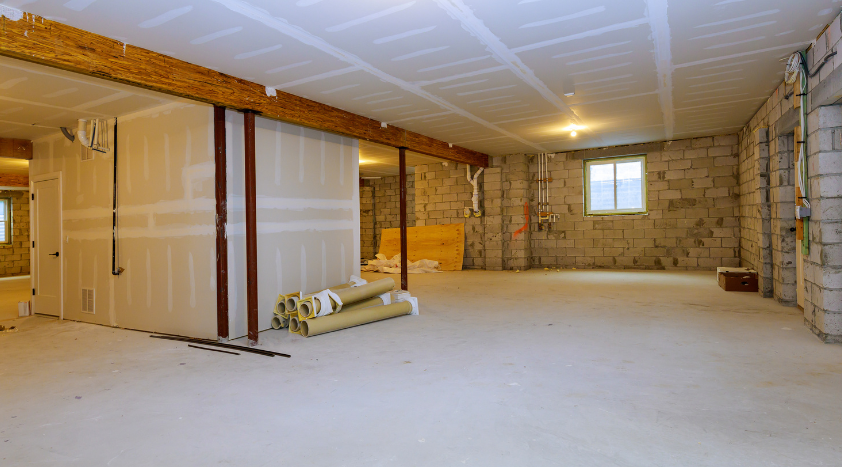
How to Clean, Prepare, and Coat a Basement Floor
Posted on March 31, 2023
Basements can be a great place to store your belongings, or they can provide extra living space. However, if you take the time to clean, prep and coat the floor properly, you could avoid some major problems.
This article will discuss how to clean, prep, and coat your basement floor, so it is in good condition for years to come!
Why You Should Clean, Prep, and Coat Your Basement Floor
When it comes to your basement floor, it’s important to ensure it is properly prepared to prevent moisture damage. Cleaning the floor helps remove dirt and debris that can form molds and mildews while prepping will help fill in cracks and holes that could be susceptible to water damage. Finally, coating the floor with a sealant or protective layer will protect it from further wear and tear.
How to Clean Your Basement Floor
The first step in cleaning your basement floor is to sweep or vacuum the surface area. This will help remove large dirt or debris between tiles or crevices. Once you have cleared the larger debris, you can mop the floor using a mild detergent or solution. This will help break up any dirt or grime built up over time.
You may also want to use an old toothbrush to remove stubborn areas. Once you have finished cleaning the surface of your basement floor, you should rinse with clean water and dry thoroughly.
Caring for Your Basement Floor
Once your basement floor is clean, it is important to keep it that way. It is generally recommended to vacuum once a week and mop once a month to prevent dirt and debris from settling into the crevices of your tiles or other materials used as flooring.
In addition to regular cleaning, it is also important to seal your basement floor. Sealing the surface will protect it from moisture and other contaminants that could cause damage over time. Use a waterproof sealant for the best results.
Finally, if you paint or stain your basement floor, use products suitable for this purpose. Some paints and stains can crack or flake off when exposed to moisture and other environmental conditions in basements due to dampness and humidity. Ensure you take precautions when using these products to keep your basement floor looking good for years to come.
What To Keep in Mind While Working With Basement Floors
When working with basement floors, it is important to keep safety in mind. Many basements are damp and humid, making them hazardous if you’re not careful. Always wear protective gear such as gloves, a dust mask, and eye protection while working on your basement floor to protect yourself from potential hazards. Additionally, ensure the area is well-ventilated during any cleaning or painting activity to avoid breathing in harmful fumes.
Tips And Tricks for Cleaning, Prepping, and Coating a Basement Floor
1. Only use quality products to clean, prepare, and coat your basement floor. This includes non-toxic cleaners and sealers that won’t damage the material on the floor or cause any health risks.
2. Use a degreaser to remove oil and grease from your basement floor before coating it. This will help the new coat adhere better and last longer.
3. Test for moisture levels in your basement floor before beginning any paint or sealer application project. High moisture levels can create a bubbling effect on the surface after painting or sealing has been applied, which can ruin your entire project.
4. Patch all cracks and holes in the concrete before applying any coating product, as this will prevent water from seeping through and damaging the new coating.
5. When applying paint or sealer, use a roller specifically designed for concrete surfaces and apply two coats with 24 hours in between, allowing adequate drying time after each coat.
6. Read all instructions on any product you are using before application; some require different amounts of dry time than others before another coat can be applied. This will ensure that your project is successful and long-lasting.
7. Use low VOC (volatile organic compounds) products when possible, as they contain fewer harsh chemicals and won’t cause health risks to you or your family.
8. Allow ample curing time for the paint or sealer before walking on or using the surface. This can take up to five days, depending on temperature and humidity.
9. Clean up your workspace after each use so that no paint or sealer is left behind that could cause damage later.
Conclusion
Maintaining your basement floor is essential to keeping it looking great and ensuring that it is a safe and comfortable place to be. Following the steps outlined here, you can ensure your basement floor stays clean, well-prepped, and coated for many years to come.





